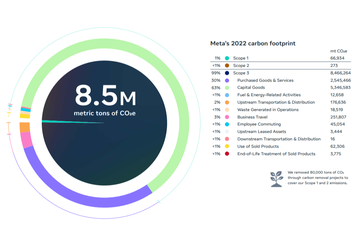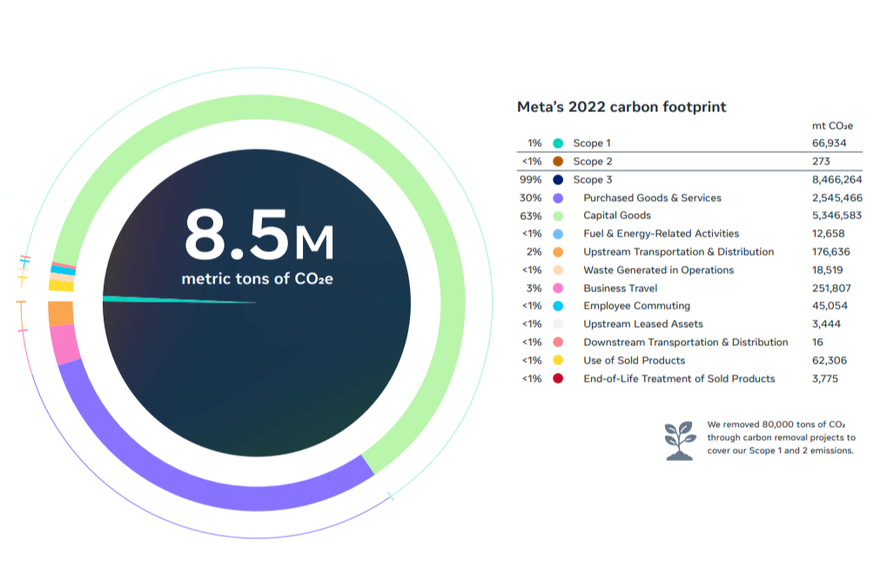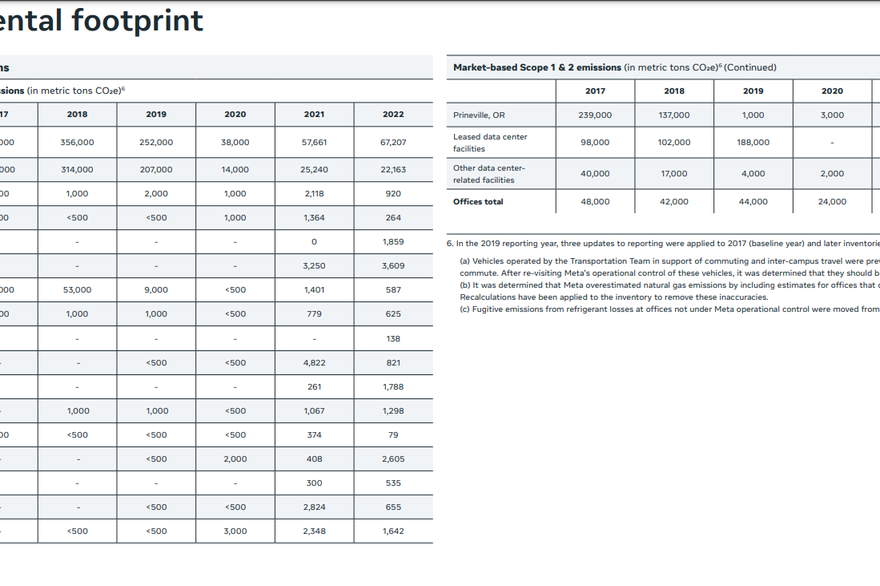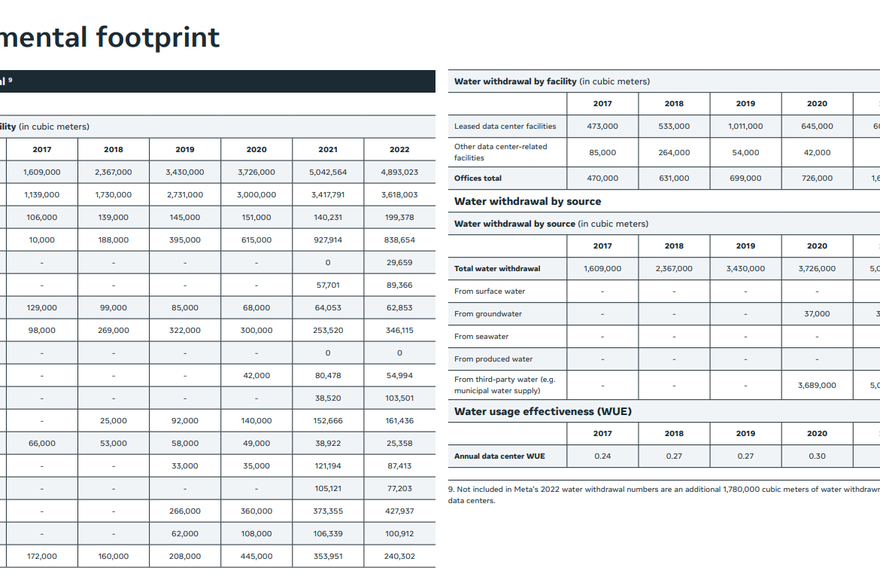Facebook owner Meta has been growing too fast to achieve its goal of being net zero in 2030, according to a report it has issued. Only one percent of the company's emissions are in its direct control, leaving 8.5 million tonnes of CO2 equivalent unaccounted for.
The report lists data center emissions from all the social media giant’s facilities, along with water use from the sites, specifying high energy and water usage at facilities such as its Clonee plant in Ireland. The vast majority of Meta's emissions are from its supply chain and partners, and the company appears to have little prospect of getting those under control.
Meta’s 2023 Responsible Business Practices report includes sections on tax, human rights, diversity, and privacy, alongside the data on Meta’s impact on the planet.
It opens with a quote from former UK politician Nick Clegg, now Meta’s president of public affairs, emphasizing the benefits of social media: “The most compelling part of technology is the way it can help people connect and take action.”
Sections of the report address areas where Meta has faced criticisms over privacy, human rights, tax avoidance, publishing hateful or illegal content, and its willingness to protect users from fraud.
"Difficult" to get to net-zero
On the environment, the report repeats Facebook’s goal to achieve net-zero emissions across its supply chain by 2030, acknowledging this will be “difficult.”
Since 2020, Facebook says, it has kept emissions from its own operations to net zero, largely by buying renewable energy. The company buys more than 10GW of renewable power globally.
However, renewable energy only affects the company’s Scope 2 emissions (from electricity used). Bringing these to zero leaves its own emissions (Scope 1) which are around one percent of its total emissions, and the vast emissions from its supply chain and ecosystem (Scope 3), which make up virtually all its environmental footprint (99 percent).
The company’s supply chains and ecosystem produced 8.5 million tonnes of CO2 equivalent in 2022, while its own emissions were only 67,000 tonnes.
Meta admits its growth over the last five years has vastly exceeded its ability to cancel the emissions: “Our business growth accelerated at a faster pace than we can scale decarbonization."
The company says: “Early in this decade, we do not expect decarbonization and business growth to be in harmony.” Including factors such as staff returning to offices after the pandemic, Meta’s emissions increasing 46 percent in 2022.
Most of Meta’s emissions come from the goods and services it buys, which are very hard to decarbonize. It offers some promises to “engage with suppliers,” to get them to use renewable energy, but falls back on a promise to use carbon removal to compensate for the shortfall.
In this, Meta is very similar to Microsoft, whose Scope 3 emissions also massively outweigh the direct emissions from energy used, that are within the company’s control. Like Meta, Microsoft found that switching to renewable electricity just reduces its Scope 2 emissions, amounting to about one percent of its total emissions.
In the data appendix, Meta details the actual emissions caused and energy used at each of its data centers. These tables are in the gallery below.
The data center with the largest carbon footprint is Meta's largest, in Prineville, Oregon, with 4,500 tonnes of CO2 equivalent. It is also likely the largest data center in the world.
The data center consuming the most water is Clonee, Ireland, which used 839,000 cubic meters - nearly double the water consumed by the next thirstiest facility, Odense in Denmark, which used 428,000 cubic meters.







